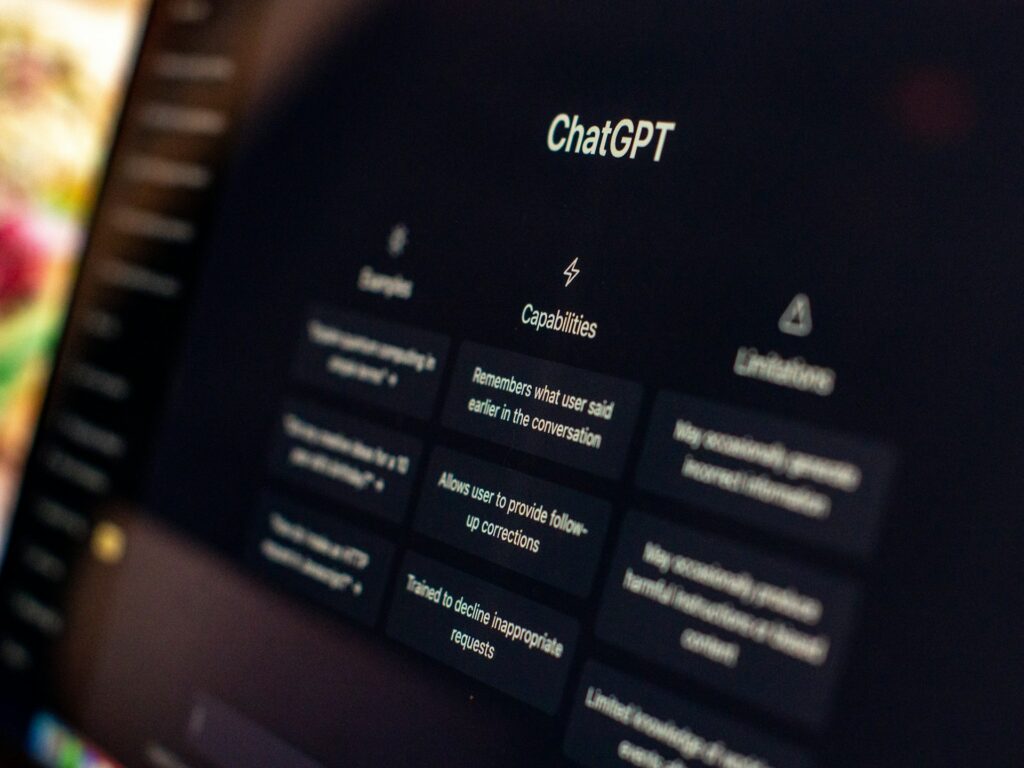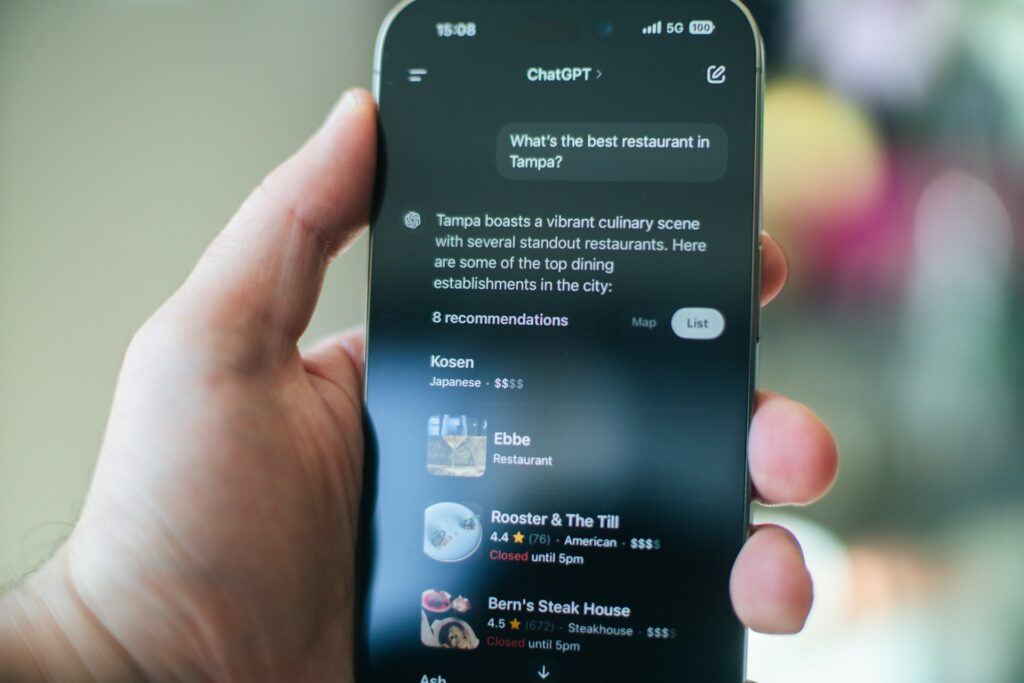Ever ask ChatGPT a question and get a so-so answer? You’re not the only one.
It feels like this thing should be amazing. But sometimes it spits out the same dry, robotic stuff. You know it’s capable of more, yet you end up rewording everything yourself. Frustrating, right?
You want it to help you write sharper emails, plan trips that actually sound fun, or explain things in a way that makes sense. Instead, you’re stuck editing lifeless replies.
The secret isn’t in some hidden code or advanced trick. It’s in how you ask. A few small changes can completely flip your results from “meh” to “wow.” This guide shows you how.
We’ll share 10 easy tips that’ll turn your simple prompts into pro-level directions. You’ll go from just asking questions to actually steering the conversation.
Contents
- 1 Tip 1: A Simple Way to Improve ChatGPT: Give It a Job
- 2 Tip 2: Provide Context (The ‘Who, What, Why’)
- 3 Tip 3: Define Your Tone and Audience
- 4 Tip 4: Summarize Articles and Meetings (The ‘TL;DR’ Hack)
- 5 Tip 5: Extract Action Items from Messy Notes
- 6 Tip 6: Use Analogies to Learn Complex Topics
- 7 Tip 7: Demand a Specific Format (Tables, Lists, etc.)
- 8 Tip 8: Set Clear Constraints (Word Count, Style)
- 9 Tip 9: Iterate and Refine (Don’t Start Over)
- 10 Tip 10: Never Trust. Always Verify.
- 11 Your Path to Master ChatGPT In Your Daily Life
Tip 1: A Simple Way to Improve ChatGPT: Give It a Job

This is the fastest way to get better answers. Never ask ChatGPT a question as yourself. Instead, tell it who to be.
See, you wouldn’t ask a random person on the street for financial advice, would you? You’d ask a financial advisor. Do the same with ChatGPT. This is called “priming” or “assigning a persona”.
When you assign a persona, the AI filters its vast knowledge. It adopts the tone, style, and expertise of that role.
Before and After
- Before: “Write a short story.”
- After: “Act as a suspense author. Write a 300-word story about a mysterious old clock. The tone must be ominous and unsettling.”
Tip 2: Provide Context (The ‘Who, What, Why’)
A common mistake is assuming ChatGPT knows your goals. It doesn’t. It has no idea where you’re coming from. It has no memory of your life or your job.
You must provide the “who, what, and why” for every request.
- Who are you?
- Who is the audience?
- What is the goal?
- Why do you need this?
More context dramatically improves relevance. Vague ChatGPT prompts lead to vague answers. Give it the background details.
Before and After
- Before: “Plan a trip to Lonavala.”
- After: “Act as a local tour guide. I’m planning a 2-day weekend trip to Lonavala for my family. We are 2 adults and 2 kids (ages 8 and 12). We are visiting during the monsoon season. Create an itinerary that focuses on adventure and easy-to-reach spots.”
Tip 3: Define Your Tone and Audience

Do you want the AI to sound like a professor? A close friend? Or maybe a “professional but gritty” mentor?
Telling ChatGPT the tone and audience is critical. This helps you improve ChatGPT’s output for any email, social media post, or presentation.
Don’t just say “friendly tone.” Be specific. “Friendly” means different things to different people.
Instead, describe the audience. “My audience consists of small business owners. They appreciate straightforward advice. They dislike technical jargon.” This gives the AI a clear direction.
Before and After
- Before: “Write an email to my team about the new project.”
- After: “Draft an email to my marketing team. The tone should be motivational and clear. The audience is busy, so keep it concise. The goal is to get them excited about the new ‘Project Apex’ launch.”
Related: I Regretted Ignoring This Hidden ChatGPT Personality Feature
Tip 4: Summarize Articles and Meetings (The ‘TL;DR’ Hack)
This is a huge time-saver. You can paste in long articles, meeting transcripts, or emails. Then, ask for a summary.
But don’t just ask, “Summarize this.” A “master” tells the AI how to summarize.
Specify the format you want. Do you want paragraphs or bullet points?
Define the audience. Is this summary for a CEO or a new intern?
Set a specific length. Ask for the summary in 100 words or in five key points.
Before and After
- Before: “Summarize this article: [paste article]”
- After: “Summarize this article for a busy executive. Provide the 3 main takeaways in a bulleted list. The entire summary must be under 150 words.”
Tip 5: Extract Action Items from Messy Notes

This is one of my favorite “pro” moves. We all have messy notes from meetings or brainstorms. They are often a jumbled wall of text.
Don’t sort through them manually. Paste the entire block of text into ChatGPT.
Use a simple prompt to find the signal in the noise. This tactic is a game-changer for project managers and team leaders.
Example Prompt
“I’ve pasted my meeting notes below. Please extract all action items. List them with deadlines and the person responsible for each.”
In seconds, you will have a clean, organized to-do list.
Tip 6: Use Analogies to Learn Complex Topics
Struggling to understand a difficult subject? ChatGPT is an amazing teacher.
The trick is to ask it to use analogies or simple terms.
You can use commands like “ELi5” (Explain Like I’m 5). Or you can be more direct.
This forces the AI to break down jargon. It connects new ideas to concepts you already know. It’s perfect for learning about science, tech, or complex legal ideas.
Before and After
- Before: “Explain machine learning.”
- After: “Explain machine learning to me like I’m a 10-year-old. Use an analogy to help me understand it.”
Tip 7: Demand a Specific Format (Tables, Lists, etc.)

You don’t have to accept a giant paragraph of text. You are the director.
You can tell ChatGPT the exact output format you want. This is perfect for organizing data.
Want to compare three products? Ask for a table.
Want a step-by-step guide? Ask for a numbered list.
Want a checklist for your next project? Just ask for it.
Example Prompt
“I’m comparing three laptops: [List models]. Create a table that compares them. The columns should be: Model Name, Price, RAM, and Best Feature.”
Tip 8: Set Clear Constraints (Word Count, Style)
ChatGPT tends to be wordy. It will ramble if you let it.
Constraints are your best friend. They force the AI to be concise and focused. By setting rules, you define the ‘box’ the AI must think inside.
This helps you get a purpose-fit response. You avoid irrelevant information.
You can set a word count. You can tell it what not to include. These clear ChatGPT prompts are essential for getting usable results.
Before and After
- Before: “Write an essay about exercise.”
- After: “Write a 500-word persuasive essay. It must discuss the top three mental health benefits of exercise. Do not talk about weight loss.”
Tip 9: Iterate and Refine (Don’t Start Over)

What happens when the answer is almost right, but not perfect?
Most people hit “regenerate response.” This is a mistake. It throws away the good parts.
A true pro iterates. They talk to the AI like an assistant. This is how you improve ChatGPT’s output step-by-step.
Use follow-up prompts to “sculpt” the answer. Don’t just accept the first draft. Refine it.
Good Iteration Prompts
- “That’s too detailed. Condense it into 100 words.”
- “I like the first part, but make the tone more professional.”
- “Expand on point 3. Give me three examples.”
- “This sounds robotic. Rewrite it to be more conversational.”
- “Now, analyze your own response and improve anything below an 8/10 on clarity.”
Also See: I Put ChatGPT Atlas and Perplexity Comet Browser to the Test – Here’s the Real Winner!
Tip 10: Never Trust. Always Verify.
This is the final and most important rule. You must understand “AI hallucinations“.
A hallucination is when the AI presents false or misleading information as a fact.
Why does this happen? The AI’s main goal is to sound plausible, not to be truthful. It predicts the next likely word in a sentence. It does not “think,” “know” facts, or “form beliefs”.
It will invent statistics. It will fabricate quotes. It will even create links to web pages that do not exist.
This can have serious consequences. A lawyer once used fake citations from an AI in a legal case. This is a serious risk in high-stakes work.
Your Rule
Always be skeptical. Critically evaluate the output. Never use AI-generated facts, names, or data without checking them yourself. Human oversight is essential..
Your Path to Master ChatGPT In Your Daily Life
Becoming great at this isn’t about tricks or secrets. It’s about learning to guide it clearly.
Think of these ten tips as your new set of tools. You’ve learned how to use personas, how to give context, how to polish answers, and how to keep things safe.
Pick just one tip from the list and try it on your next prompt.
Stop sitting back. Start taking charge. That’s how you master ChatGPT in everyday life.